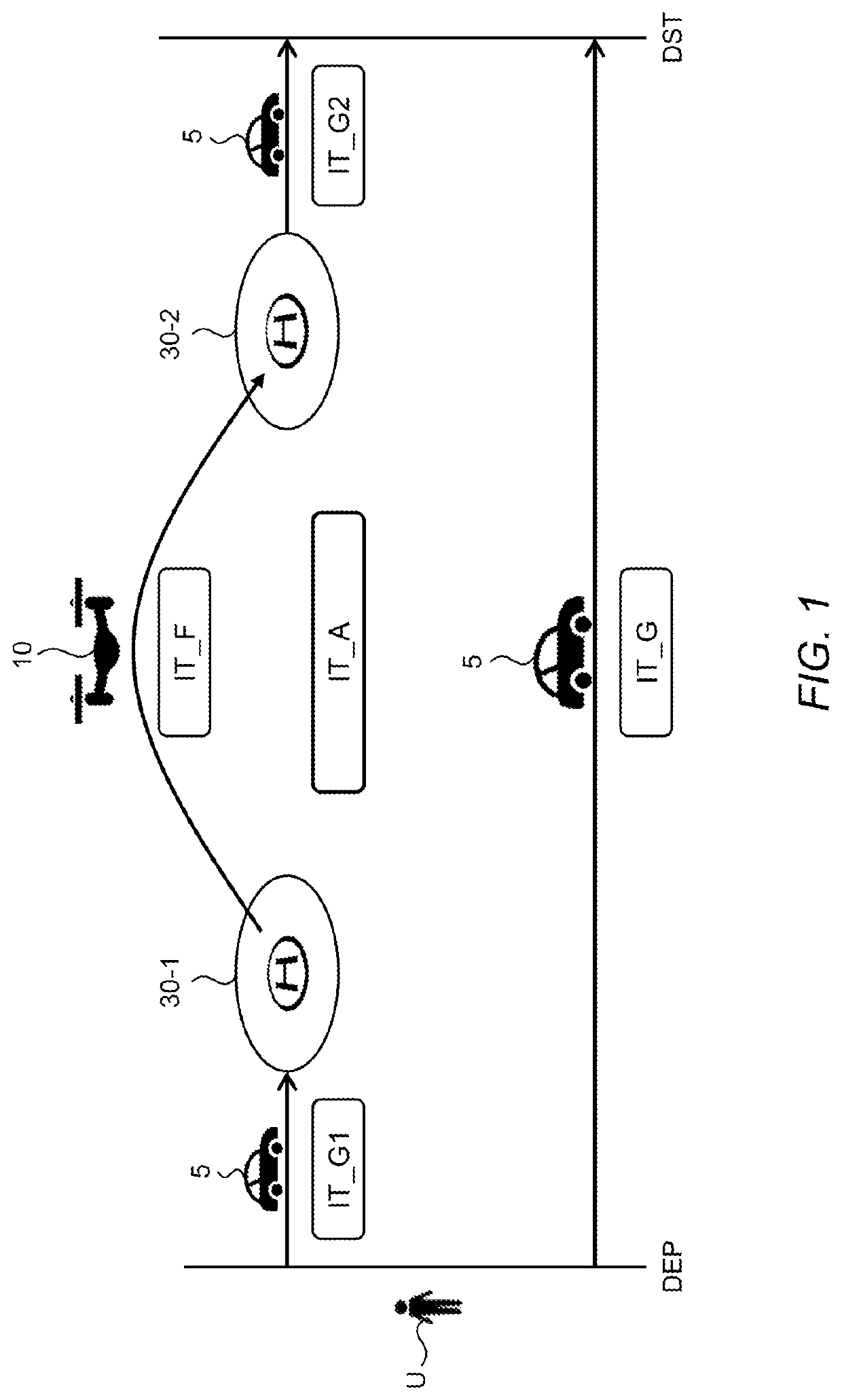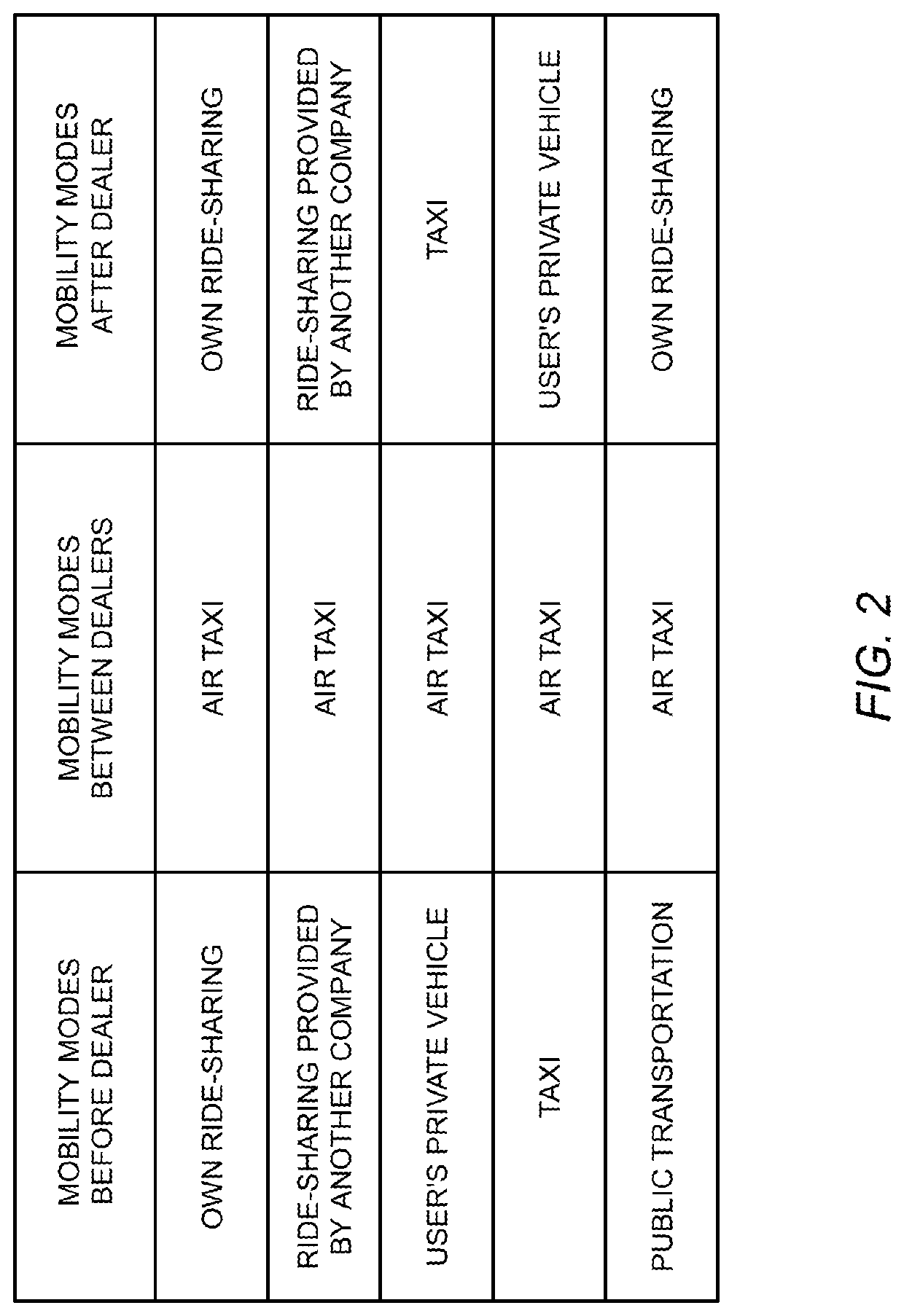Mobility service delivery method, mobility service system, and management server
- Summary
- Abstract
- Description
- Claims
- Application Information
AI Technical Summary
Benefits of technology
Problems solved by technology
Method used
Image
Examples
third example
3-2-3. Third Example
[0122]FIG. 17 is a flow chart showing a third example of the itinerary planning process (Step S200). The third example is a modification example of the second example shown in FIG. 16. As described above, when the use of the eVTOL 10 is specified (Step S210; Yes), the information processing device 130 plans both the itinerary IT-A and the itinerary IT-G (Steps S230 and S240). Furthermore, in Step S250, the information processing device 130 compares the required time TR-A of the itinerary IT-A and the required time TR-G of the itinerary IT-G. When the required time TR-A is equal to or less than the required time TR-G (Step S250; Yes), the information processing device 130 selects both the itinerary IT-A and the itinerary IT-G as candidates (Step S260). On the other hand, when the required time TR-A is longer than the required time TR-G (Step S250; No), the information processing device 130 discards the itinerary IT-A and selects the itinerary IT-G as a candidate (...
first example
5-1. First Example
[0146]FIG. 21 is a conceptual diagram for explaining a first example. In the first example, the flight range of the first eVTOL 10-1 is less than the flight distance D12 from the first takeoff and landing site 30-1 to the second takeoff and landing site 30-2. However, the first eVTOL 10-1 is a “specific eVTOL 10-S.” The specific eVTOL 10-S is an eVTOL 10 whose battery is replaceable, or an eVTOL 10 that is rechargeable within a predetermined (e.g., 8 minutes).
[0147]A third takeoff and landing site 30-3 is located between the first takeoff and landing site 30-1 and the second takeoff and landing site 30-2. Moreover, the third takeoff and landing site 30-3 is located within the flight range of the first eVTOL 10-1 from each of the first takeoff and landing site 30-1 and the second takeoff and landing site 30-2. That is, the flight range of the first eVTOL 10-1 is equal to or greater than a flight distance D13 from the first takeoff and landing site 30-1 to the third ...
second example
5-2. Second Example
[0151]FIG. 22 is a conceptual diagram for explaining a second example. In the second example as well, the flight range of the first eVTOL 10-1 is less than the flight distance D12 from the first takeoff and landing site 30-1 to the second takeoff and landing site 30-2. In addition, the first eVTOL 10-1 is not the specific eVTOL 10-S.
[0152]A fourth takeoff and landing site 30-4 is located between the first takeoff and landing site 30-1 and the second takeoff and landing site 30-2. Moreover, the fourth takeoff and landing site 30-4 is located within the flight range of the first eVTOL 10-1 from the first takeoff and landing site 30-1. That is, the flight range of the first eVTOL 10-1 is equal to or greater than a flight distance D14 from the first takeoff and landing site 30-1 to the fourth takeoff and landing site 30-4. Furthermore, a second eVTOL 10-2 different from the first eVTOL 10-1 is available at the fourth takeoff and landing site 30-4 at the reservation da...
PUM
 Login to View More
Login to View More Abstract
Description
Claims
Application Information
 Login to View More
Login to View More - R&D
- Intellectual Property
- Life Sciences
- Materials
- Tech Scout
- Unparalleled Data Quality
- Higher Quality Content
- 60% Fewer Hallucinations
Browse by: Latest US Patents, China's latest patents, Technical Efficacy Thesaurus, Application Domain, Technology Topic, Popular Technical Reports.
© 2025 PatSnap. All rights reserved.Legal|Privacy policy|Modern Slavery Act Transparency Statement|Sitemap|About US| Contact US: help@patsnap.com



